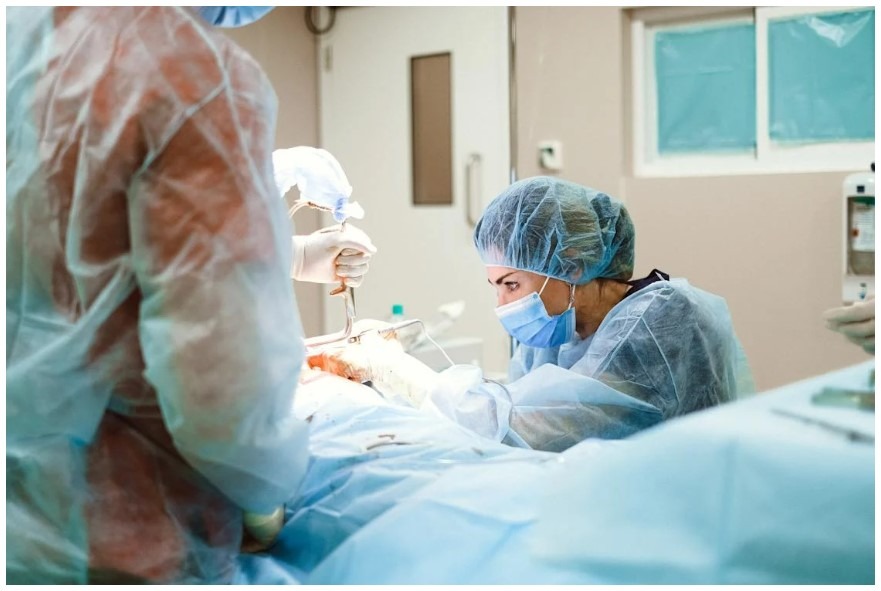Cosmetic surgery seems like a modern medical procedure, yet it has longer and more complicated origins than most people imagine. People have always been concerned about outward appearance ever since the beginning of civilization. To give people a better look, doctors of the ancient times designed new ways of performing esthetic surgeries.
The first evidence of plastic surgery goes as far back as 2000 B.C. in India and Egypt. Ancient physicians practiced nose reconstruction, making use of reeds to keep nostrils open as they wait for the nose to heal. This early form of plastic surgery treatment was first mentioned in the Edwin Smith Papyrus, a transcription of an Ancient Egyptian medical text.
In 600 B.C., an Indian physician named Sushruta was considered as the first plastic surgeon. He published the Sushruta Samhita, a collection of medical texts about plastic and cataract surgery, as well as other illnesses. Sushruta performed the first skin graft.
With the culture that highly valued the beauty of the natural body, the Romans also performed cosmetic surgery. During the first century A.D., Roman physicians were performing rhinoplasty that became popular because of the barbaric custom of many kingdoms like cutting off upper lips and noses of enemy soldiers. Operations were made on former gladiators whose faces and bodies became severely damaged after a battle. Roman scholar Aulus Cornelius Celsus wrote De Medicina, a record of surgical techniques that outlined some of the procedures used in practicing breast reduction and reconstruction of noses, lips, and ears.
After the fall of Rome, the progress of plastic surgery appears to have been stagnant until the Renaissance. The spread of Christianity forbade any type of surgical changes to the body as mandated by Pope Innocent III.
During the 1500s, an Italian physician named Gaspare Tagliacozzi recognized the need to keep grafted skin supplied with blood to avoid infections. Before his time, skin grafting meant cutting skin from one area and then sewing it into another. Tagliacozzi developed a method of nasal reconstruction to correct saddle nose deformity using skin flaps of the upper arm. However, this process is extremely painful as the technology of anesthesia was still in its early stages of development at that time. Plus, his work was hindered by the influence of the church.
For centuries, the cosmetic surgery industry continued to struggle. While techniques of anesthesia haven’t been established, surgeries that involve healthy tissues are of great pain.
However, efforts were made to cosmetic and plastic surgery to become more precise and refined. In 1793, an operative procedure on a lip was performed using a flap from the neck by French surgeon François Chopart. In 1814, the first successful rhinoplasty in England was conducted by surgeon Joseph Carpue on a British military officer who lost his nose to the toxic effects of mercury treatments. Carpue made use of Indian surgical practices long ago. In 1818, a German surgeon named Carl Ferdinand von Graefe founded German rhinoplastic surgery and published his work entitled Rhinoplastik. Von Graefe modified Tagliacozzi’s Italian methods of skin grafting.
Meanwhile, in 1827, the first American plastic surgeon John Peter Mettauer performed the first cleft palate operation using instruments he designed himself.
One major impediment to cosmetic surgery was removed in the 1860s when English doctor Joseph Lister’s model of aseptic surgery was introduced in Germany, France, Italy, and Austria. When anesthesia was further refined by the 1880s, cosmetic surgery became a safer and less painful method of modifying body parts. Plus, the outbreak of wars changed the course of plastic surgery history forever.
During World War I, plastic cosmetic surgery burgeoned. Plastic surgery was pioneered by New Zealand-born surgeon Sir Harold Gillies. He developed several techniques involving skin graft and the pedicle, treating mostly soldiers who suffered from facial injuries during the World War I. An Armenian American oral surgeon Varaztad Kazanjian was considered as the founder of the modern practice of plastic surgery and pioneered various maxillofacial surgical techniques.
In the mid-1920s, the first formal training and fellowship for plastic surgery were established at Johns Hopkins. Meanwhile, the first division of plastic surgery at a public hospital was formed in the New York City Hospital.
Plastic surgery was further institutionalized by the medical community by 1931 when The American Society of Plastic and Reconstructive Surgeons, which is today known as the American Society of Plastic Surgeons, was founded by Drs. Jacques Maliniac and Gustave Aufricht. By 1937, the association formed the American Board of Plastic Surgery to raise the standards in the specialty.

This millennium, public interest in plastic surgery skyrocketed. Popular TV shows like Extreme Makeover, Dr. 90210, and Nip/Tuck gave a new and familiar mindset towards plastic surgery. The most common types of plastic surgeries are liposuction and breast augmentation, with women accounting for 91 percent of the patients.
Today, the industry of cosmetic surgery continues to expand and evolve as modern technology advances with time.

